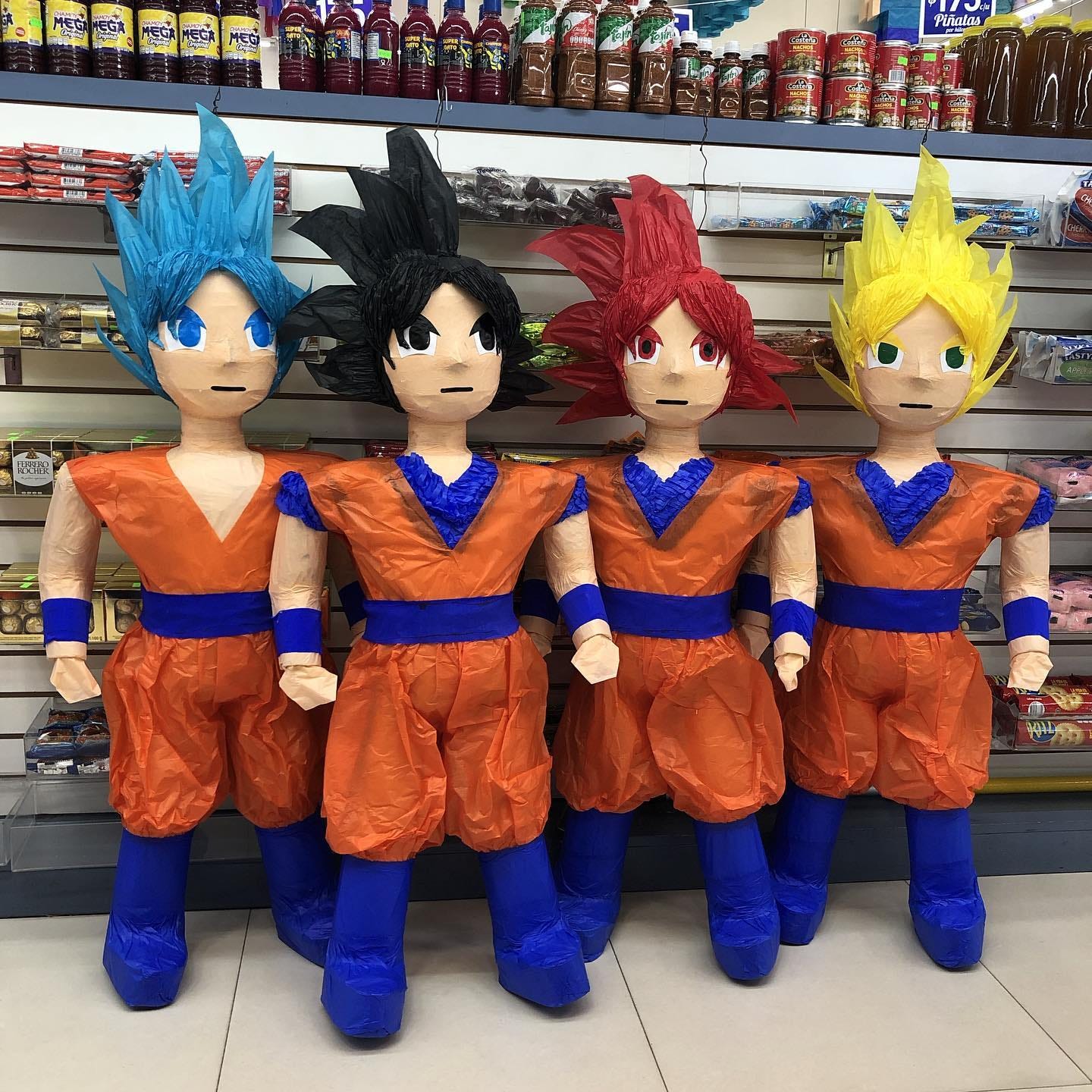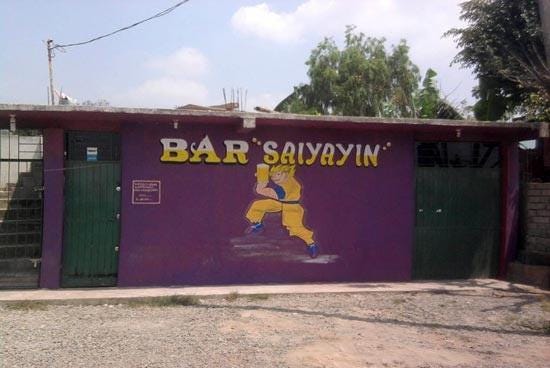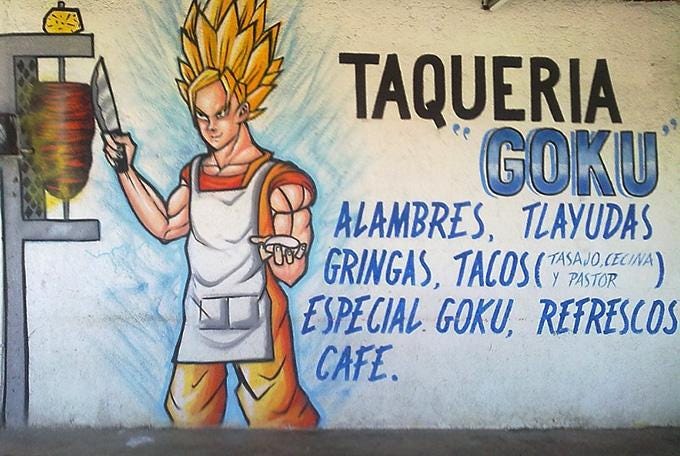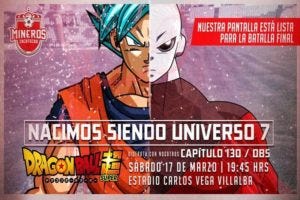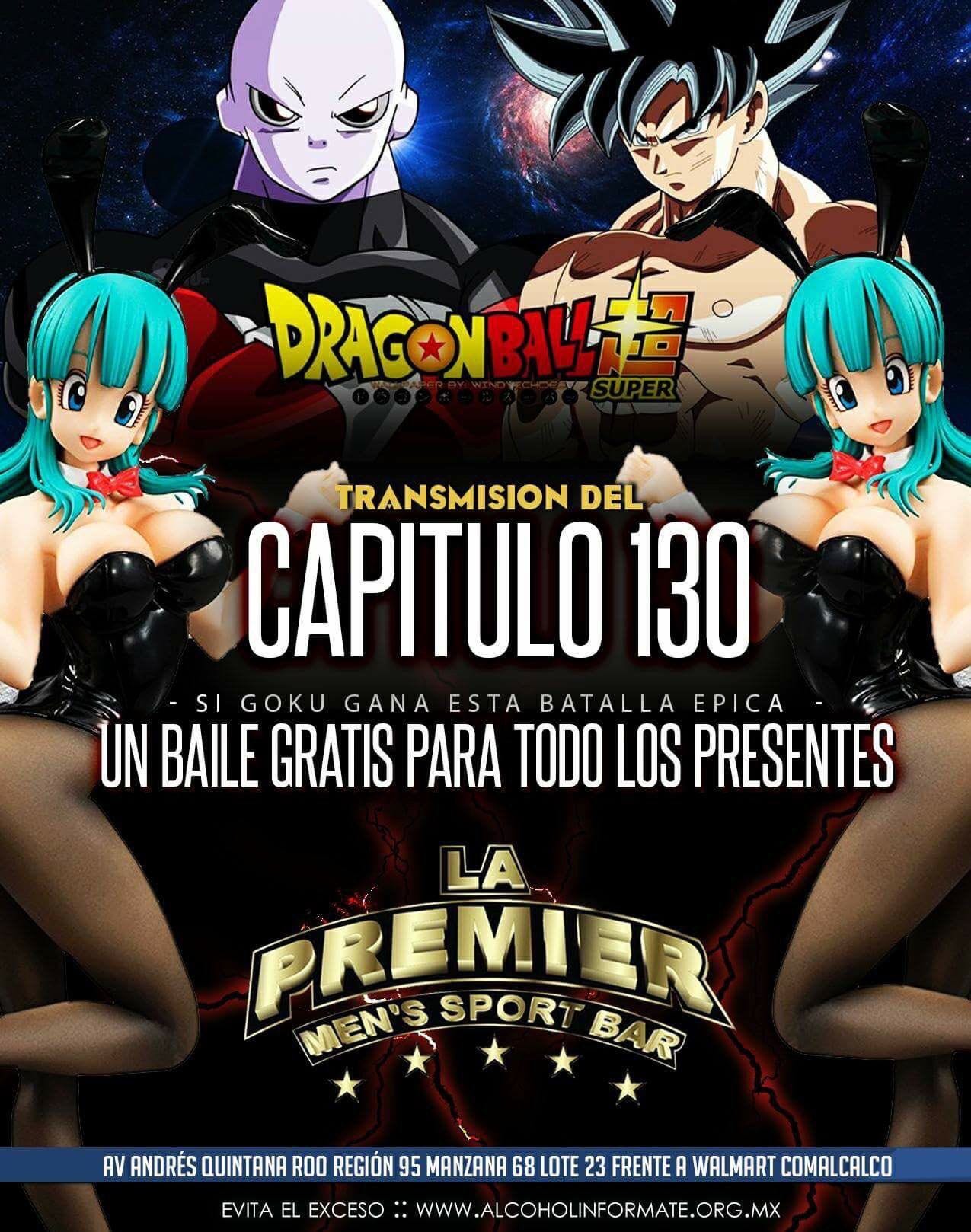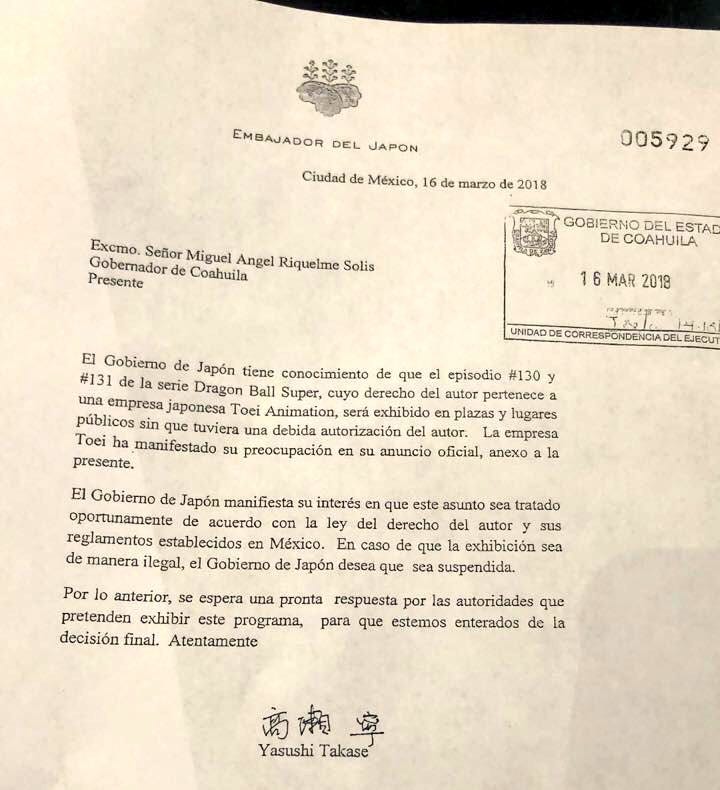Happy Monday everybody and welcome back to another edition of Barrón’s Guide to Everything. This week I just want to take a moment and talk about a couple of absurdities in the world that kind of justify my own obsession with anime- it’s a Mexican thing, damnit.
So several years ago, after a Vlog Brothers kick, a friend proposed the question: Is pizza American? It seemed like a dumb question at the time, but the more we talked about it, the more ambiguous the answer became.
Well, pizza was introduced to America by Italian immigrants so it’s Italian, right?
But the pizza in Italy doesn’t even resemble the pizza in the States which is the version that spread the most globally. So the pizza most are familiar with is American-style pizza, making it American.
An argument for pizza being Brazilian was made, on account of Sao Paulo alone having more than six thousand pizza parlors and a deep history with the dish. The waters got even murkier when we took into account every brand of chip seems to have a pizza flavor despite the fact that the very definition of a pizza varies from place to place. You can have pizza without sauce or without cheese, for instance. Whether or not corn and peas constitute legitimate toppings is as hotly debated as whether or not pineapple and Canadian bacon deserve to adorn the pie. Chicago style vs New York? Isn’t a calzone really just a pizza folded in half? There were a lot of factors that made this seemingly dumb question, not at all a simple one.
Ultimately we decided that while the origin of something was important, its spiritual home- where it was most widely accepted, probably played a bigger role and we decided that because of how prevalent it was in American cuisine, pizza was American. (Fun fact, this line of thinking actually makes pizza Norwegian as of 2020, believe it or not. Norway consumes more pizza per capita than any other country. To be more precise, with a population of about 5.5 million, they inhale an average of eleven pounds of pizza each, annually. I might be moving soon, guys)
So if pizza is Norwegian, where they love it more than anywhere else. Then Dragonball is, without a doubt, Mexican.
For the uninitiated, Dragonball began as a pet project of mangaka Akira Toriyama. At the time, he was regularly publishing a comedy series by the name of Dr. Slump, but was unsatisfied with the project, calling it boring to work on. After negotiating with his publisher, they agreed to let him work on something else but only if it was more interesting than his current story. Eventually, he and his editor created Dragonball, a martial arts epic. (Fun fact number 2, the series might never have come about if not for Toriyama’s wife, Nachi Mikami. The story goes that while serving tea to Toriyama’s editor during a brainstorming session, she offhandedly mentioned how often Toriyama watched kung fu movies while drawing his manga. This sparked the idea, and she actually influenced a great deal of the story for years to come, even being credited as the one who named the Kamehameha wave)
Originally published as a weekly serial during the 1980’s, Dragonball followed Son Goku and his friends as they searched for the mystical dragon balls- seven enchanted spheres which when gathered allowed you to summon the Eternal Dragon and be granted a single wish. The series borrowed heavily from the classic literary tale “Journey To The West” and was an affectionate parody of Hong Kong kung fu flicks, as Toriyama wanted to stay close to his roots in comedy. It quickly gained enough popularity to acquire an anime adaptation that had a moderate amount of success and gradually transformed into the archetypal “battle manga”. But as the series took on a more serious tone, it was decided that a new animation team was needed. Simply put, the rounded and soft shapes of the anime didn’t capture the new feel of the manga, which had long since lost the comedy aspect. Thus Dragonball Z, a soft reboot of Dragonball, was born.
I mean, look at the art evolution.
All of this to say, it’s relatively common knowledge that the Dragonball series is one of the most beloved of all time, with a phenomenal amount of staying power and the kind of influence TikTokers can only dream of. Something that is slightly less common knowledge, at least as far as the States are concerned, is just how popular the series is in Latin America and especially Mexico. There are entire forums and articles discussing the Mexican fanbase of this show and the massive impact it’s had on the culture but since you’re reading this instead, allow me to blow your mind by proving Mexico loves Dragonball more than Japan.
So Dragonball Z hit Japanese tv screens in 1989 and ran until 1996, getting picked up for translations along the way by a number of foreign countries, including the United States and much of Latin America. The key difference between these demographics being that the import-reliant Latin American countries really didn’t have much to offer in terms of competition for ratings. Combine this with Japanese syndication rights being dirt cheap compared to anything the U.S. produced and a practically nonexistent tv censor, and you get a gritty, violent, sometimes risque, series aimed at kids that has yet to come off the air. Seriously, Dragonball Z (DBZ) has been in syndication in Mexico (and most Latin American countries) for the last three decades.
Now I get that there are plenty of other shows that have just stuck around (avoids making eye contact with The Simpsons). But, for Mexico, DBZ just hit different (and I hate that phrase so the fact that I’m using it should inform you of the gravity of those words). Don’t get me wrong, the series became plenty popular in the States, and even globally- it’s also universally regarded as the grandfather of all modern action anime and its manga has only ever been outperformed by titles it directly inspired. The thing is, nowhere else has the series taken root in the cultural norms and everyday vernacular of the people who watch it. Let me explain with some anecdotal evidence, followed by some concrete facts.
As children, my brother and I would occasionally get carted off to visit our relatives in Mexico. This was usually a rough experience as it took a few days to get there, the heat was brutal, neither of us were as fluent as was expected of us, the heat was brutal, we weren’t really able to bring anything to entertain ourselves, and the heat was brutal. But on top of all that, the somewhat graphic nature of DBZ meant it really only aired on cable in the States, which we didn’t have at the time. So while we had seen a couple of episodes here and there, the show had already run its course a number of times in Mexico, as my cousins liked to remind me.
As expected, we’d get clowned on for not having seen the whole series pretty much our entire stay, and I’d eventually get clowned on in school for being a nerd who liked anime. Oh, the pains of being first-generation American… but I digress. In addition to being what the cool kids were into, Dragonball Z was also just part of the language. During our stay(s) we took to using variations of the phrase “convertir a un super saiyajin” (transform into a super saiyan) for just about everything. It was a threat- as in, I’ll transform into one if you keep bugging me, a lament- as in I’m so frustrated I just might transform, but more often than not as an expression of awe or excitement in an unrelated piece of media with similar undertones- as in “watch, he’s gonna transform, he’s gonna transform”.
Dragonball was EVERYWHERE. On shirts, on stickers, backpacks, trading cards, and pinatas. Every house we visited with a kid our age had at least two Dragonball action figures. To be honest, anime in general was pretty big and I was actually exposed to more anime in Mexico than I was at home. But Dragonball was by far the most popular, and it was a great time soaking it up when I wasn’t getting poked at for not knowing Cell would reach his “Perfect” form.
Alright, I know what you’re thinking. A couple of summers when it was “all the rage” does not a spiritual home make. In which case, I ask that you think of the most prolific fictional hero in American pop culture. Go ahead. I’ll wait.
You probably landed on the likes of Superman, Batman, Spider-Man, or even Ironman thanks to the Marvel Cinematic Universe. Now name a mainstream song explicitly about any of them. Not a song with a throwaway line a la “I’m Superman with the wind at his back”, I mean an entire song about them- what they stand for, what they’ve gone through. You’d be hard-pressed to find anything like that in any genre, but a quick YouTube search brings up a corrido, a cumbia, and a mariachi style ballad all in Goku’s honor. That’s three genres of Mexican music, all of them culturally significant. Still not convinced?
Here’s Diego Rivarola, a professional soccer player who has taken on the moniker of “Goku” because of his drive, competitive nature, and natural talent.
How about some businesses named specifically after the series?
What’s that? The work of a few fanatics, you say? How about some numbers then? Since 2013, Japan has released three Dragonball movies: Battle of Gods, Resurrection F, and Broly. According to those links, all three movies grossed the most in Japan with Mexico being the only other country to even come close to Japan’s numbers. While this might lead you to believe Japan has the biggest Dragonball fans, you don’t quite have the full picture yet.
Japan’s average household income is over seven times that of Mexico’s, and with nearly twenty-three percent of their population at or below the poverty line, money literally means more to the Mexican population. With so many living on less than $6 a day, the fact that Mexico spent $10.4 million in 2019 to watch a Dragonball movie should really tell you something about how important this series is to the culture. But if that’s still not enough to convince you that Dragonball means more to Mexico than it does to Japan, I present the Jiren fight hype train.
You see, after the success of the new movies, Toei saw that there really was a demand for more Dragonball and started a new series: Dragonball Super. Throughout this new series, a tournament arc was introduced, along with a new character, Jiren the Grey.
Sigh… I should probably work out more...
Anyway, Jiren was hinted to be the only one who would be a match for Goku in the tournament but turned out to be significantly stronger. As per usual, however, every time they clashed, Goku became a better fighter and forced Jiren to unveil more of his real strength. Now, every time it was announced that the two would fight, businesses all over Mexico would advertise the next episode as if it was a title boxing match.
And I mean all over. Here’s a poster of a Mexican strip club offering free lap dances if Goku won the fight.
The series was so popular, entire cities would hold Dragonball Super watch parties in their plaza. These events were on the level of the World Cup as far as turnout was concerned, and got so big, the Japanese embassy sent a strongly worded letter to the Mexican government regarding their legality. Seriously.
That’s right. Mexicans love Dragonball so damn much they were willing to start a diplomatic incident just to gather en masse and cheer Goku on.
Here’s the thing though. Dragonball really isn’t that good. It’s got every single problem any long-running series could ever possibly have, and there’s no one in the anime community today who would honestly suggest sitting through all 575 episodes. So why all the fuss?
Well, kind of like the pizza question, there’s not really a simple answer to that. You can cobble together responses based on simple human psychology. For instance, Dragonball doesn’t look like anything else, even other anime, so there’s the spectacle aspect. Comparisons to luchador culture have been made. There’s also a nostalgia factor, or more likely, the fact that it never went off the air and so has become a steady constant that has tied generations of fans together, often whole families. I know it at least gave me and my cousins something to talk about. But I feel like the real reason might be something a bit deeper.
By its very nature, Dragonball was never especially anchored to Japanese culture the way a lot of other anime are, so it’s a lot easier to insert yourself into its world, to resonate with its characters and more importantly, their struggles. Modern-day anime tends to revel in its role as power fantasy escapism. Pick one at random today and it’s liable to have an overpowered protagonist with a host of love interests chasing after them. Dragonball, as repetitive and formulaic as it ended up becoming, certainly featured powerful characters, but also significantly more powerful villains. It wasn’t about all your dreams coming true or lucking into Easy Mode, but about how often life suddenly flips to the You WILL Die difficulty setting and the desperate, arduous, crawl to survival that entails.
Day after day, week after week, you’d watch these fighters come face to face with impossible odds- get beat, struggle, persist, dig deeper, and ultimately evolve to overcome adversity. Of course, there are other messages hidden within all the shouting, punching, and energy blasts that reshape the landscape. Things like the value of hard work and training, the importance of family, the cost of hubris, the idea that within us all lies a well of untapped potential that can be accessed in moments of great need, and my personal favorite trope: that a warrior’s greatest strength only manifests when protecting something they love. I like to think these are the reasons the series has remained so popular in a country that is no stranger to difficulty and hard work. I know they’re the reasons I enjoy all the anime it inspired, and I take a small amount of solace in the thought that maybe I’m more in touch with my people than I think.
Then again maybe there just isn’t anything better on?
That’s it for me today, everyone. If you enjoyed the read, consider sharing it with a friend or two and if you’re new here, consider subscribing to the newsletter. Also, if you’re looking for anime suggestions, let me know. There are some great shows airing right now.
-C




